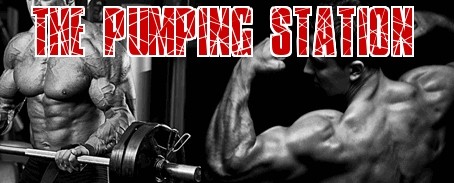Body Composition Testing Methods
Bodybuilders and some regular dieters know how to test body-fat, even if it's a "guesstamate" a bodybuilder will be able to give a guess that is within 1% of what a person's body-fat percentage. It takes a bit of practice, but once you know what your own body-fat is, you will know how much fat is hiding any muscle.
This gives you a head start in planning, as well as creating short-term goals. If you change a training schedule or change your diet it could make an enormous difference to your motivation to see your body-fat drop by 1%. It might not be much if you are 30% body-fat (obese) but when you drop from 10% to 9%, it's a difference you can see.
The ideal body-fat health range for females is 14% to 38% fat, ranging between 15% to 25% body-fat for female athletes and sports women. The ideal body-fat health range for males is between 5% to 25% body-fat, ranging between 7% to 15% body-fat for athletic males.
The following five ways of testing body-fat composition have been accepted by the medical association. It is important to note that the first three are very accurate but not consumer friendly because they cost, a LOT. Using a DEXA Scan or Body Plethysmography (Bod Pod) or Underwater/Hydrostatic Weighing needs a laboratory or a research hospital to measure body-fat.
1. DEXA Scan:
Fully clothed the subject is administered small doses of radiation showing the difference between fat, muscle and bone on an X-ray. A specific percentage is then given of the total volume of these three quantities. Because this highly accurate scan can measure intramuscular fat, the body-fat % will be 3% to 7% higher.
2. Whole Body Plethysmography (Bod Pod):
Subject steps into a sealed "pod" without wearing clothes, it then measures the volume inside the pod and how much of that air is displaced by your body. This allows the pod to measure your bodies overall density which is how body-fat is measured because density = mass/volume.
3. Underwater/Hydrostatic Weighing:
Inside a large tank of water, the subject is then seated on a scale. The subject is then instructed to exhale and sit still for 10 secs while the scale stabilizes, it then gives an accurate reading of the overall body density, from which body-fat can be calculated.
4. Skinfold Calipers:
The calipers measure how thick the two layers of skin are plus the fat directly under the skin called subcutaneous fat. This measurement is taken at 4 to 6 different places on the body like triceps, abs, shoulder blade, calf and love handles. These figures are then entered into a table which measures total body-fat.
5. Bio - Impedance:
Subject usually stands on a platform and presses a button which sends a small current of electricity through the body. It then measures the resistance, fats are like rubber stopping the flow of electricity while bone and muscle offer no resistance to electricity because its 80% water. The more the current drops, the higher percentage body-fat.
Click Here to Sign Up for Your Free Bodybuilding Magazine Subscription
